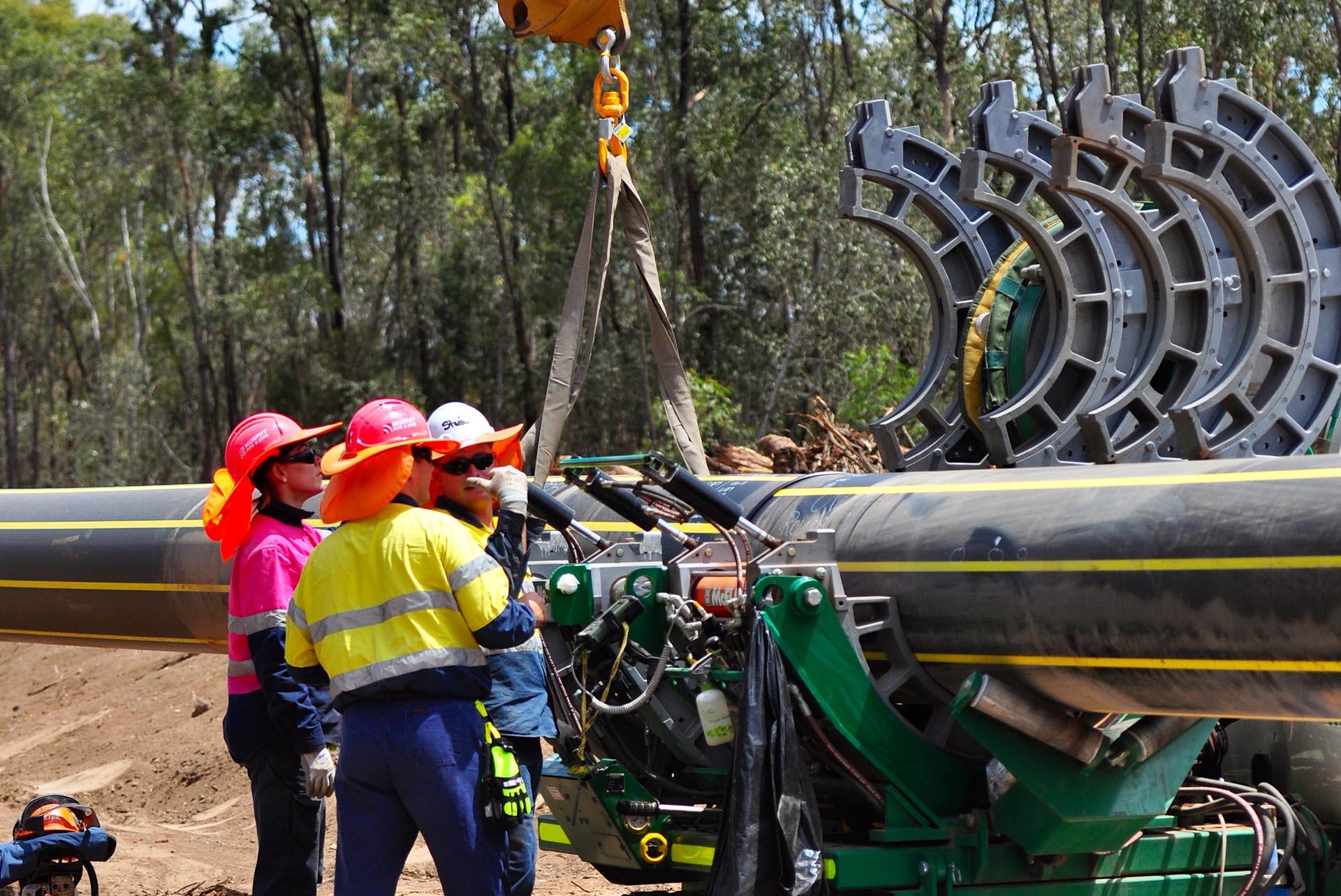PE can be processed and manufactured in a variety of ways. Using ethylene as the main raw material, propylene, 1-butene and hexene as copolymers, under the action of catalysts, using slurry polymerization or gas polymerization process, the polymer obtained by flash evaporation, separation, drying and granulation to obtain uniform particles of the finished product. This includes processes such as sheet extrusion, film extrusion, pipe or profile extrusion, blow molding, injection molding, and roll molding.
Extrusion: The grade used for extrusion production is generally melt index less than 1, MWD is medium width. Low MI during processing results in suitable melt strength. Wider MWD grades are better suited for extrusions because they have a higher production rate, lower die opening pressure, and a lower melt rupture tendency.
PE has many extrusion applications such as wires, cables, hoses, tubing and profiles. Pipeline applications range from small-section yellow tubes for natural gas to thick-walled black tubes 48 inches in diameter for industrial and municipal pipelines. Large diameter hollow wall pipes are rapidly developing as alternatives to storm drains and other concrete sewers.
1.Sheet and Thermoforming: The thermoforming lining of many large picnic type coolers is made of PE for toughness, light weight and durability. Other sheet and thermoforming products include fenders, tank linings, plates and basin guards, shipping boxes and tanks. Based on the fact that MDPE is tough, resistant to chemical corrosion and impermeable, a large and rapidly growing number of sheet applications are mulch or pool bottom Muri.
2.Blow molding: More than one-third of HDPE sold in the United States is for blow molding applications. These range from bottles containing bleach, motor oil, detergent, milk and distilled water to large refrigerators, car fuel tanks and ink cartridges. Blow molding grades have performance specifications such as melt strength, ES-CR and toughness similar to those used for sheet and thermoforming applications, so similar grades can be used.
Injection blow molding is commonly used to make smaller containers (less than 16 ounces) for packaging drugs, shampoos, and cosmetics. An advantage of this process is that bottles are produced by automatic bottleneck removal, eliminating the need for post-finishing steps normally associated with blow molding processes. While some narrow MWD grades are used to improve surface finish, medium to wide MWD grades are commonly used.
3.Injection molding: HDPE has countless applications, from reusable thin-walled beverage cups to 5-gsl cans that consume one-fifth of the HDPE produced domestically. Injection grades typically have a melt index of 5 to 10 and provide lower flow grades for toughness and higher flow grades for machinability. Uses include daily necessities and food thin wall packaging; Tough food cans and paint cans; High resistance to environmental stress cracking applications such as small engine fuel tanks and 90 gallon trash cans.
4.Rolling: Materials using this process are usually crushed into powder materials that can melt and flow in the thermal cycle. Two types of PE are used for rolling: general-purpose and cross-linked. General purpose MDPE/HDPE typically has a density in the 0.935 to 0.945 g/CC range with a narrow MWD, resulting in a high impact product with minimal warp and a melt index range of 3-8. Higher MI grades are generally not suitable because they do not have the impact resistance and environmental stress cracking resistance required for roll-molded products.
High performance rolling applications take advantage of its unique properties of chemically crosslinked grades. These grades flow well during the first part of the molding cycle and are then cross-linked to develop their superior environmental stress cracking resistance and toughness. Wear and weather resistance. Crosslinked polyethylene is particularly suitable for large containers, from 500 gallon tanks used to transport a variety of chemicals to 20,000 gallon agricultural storage tanks.
5.Film: PE film processing generally adopts the general blowing film processing or flat extrusion processing method. Most PE is for thin films and can be used with either Universal Low density PE (LDPE) or linear Low Density PE (LLDPE). HDPE film grades are commonly used where excellent tensile properties and excellent impermeability are required. For example, HDPE films are commonly used in commodity bags, food bags and food packaging.

Post time: Nov-11-2022




